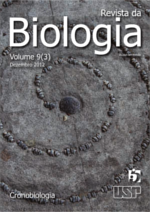New device for measuring peripheral temperature rhythm in humans: a case study
DOI:
https://doi.org/10.7594/revbio.09.03.15Keywords:
Acrophase, rest/activity, rectal temperature, thermoregulation, wrist temperatureAbstract
Recent studies have considered wrist temperature as a possible phase indicator in human circadian system. The present study shows results of a new device – ACT10 – which provides longterm data and continuously measures wrist temperature and rest/activity rhythm. An adult man wore the ACT10 and other thermal sensors positioned in the wrist (dorsal and ventral superficies), axillar and rectal regions to monitor his temperature during 48 h. Differences in wrist and rectal temperature acrophases’ can be explained by the thermoregulation process. The results obtained confirm the use of ACT10 as a reliable and less invasive alternative to access the status of the human circadian systemDownloads
Downloads
Published
2018-04-23
Issue
Section
Ensaio
License
We ensure that our journal does not retain any copyright and that these are exclusive of the author(s) of the text. In that sense, we intend to break any restrictions to the published material and to achieve more intensely our goal of communicating science.
How to Cite
Wey, D. (2018). New device for measuring peripheral temperature rhythm in humans: a case study. Revista Da Biologia, 9(3), 80-84. https://doi.org/10.7594/revbio.09.03.15






